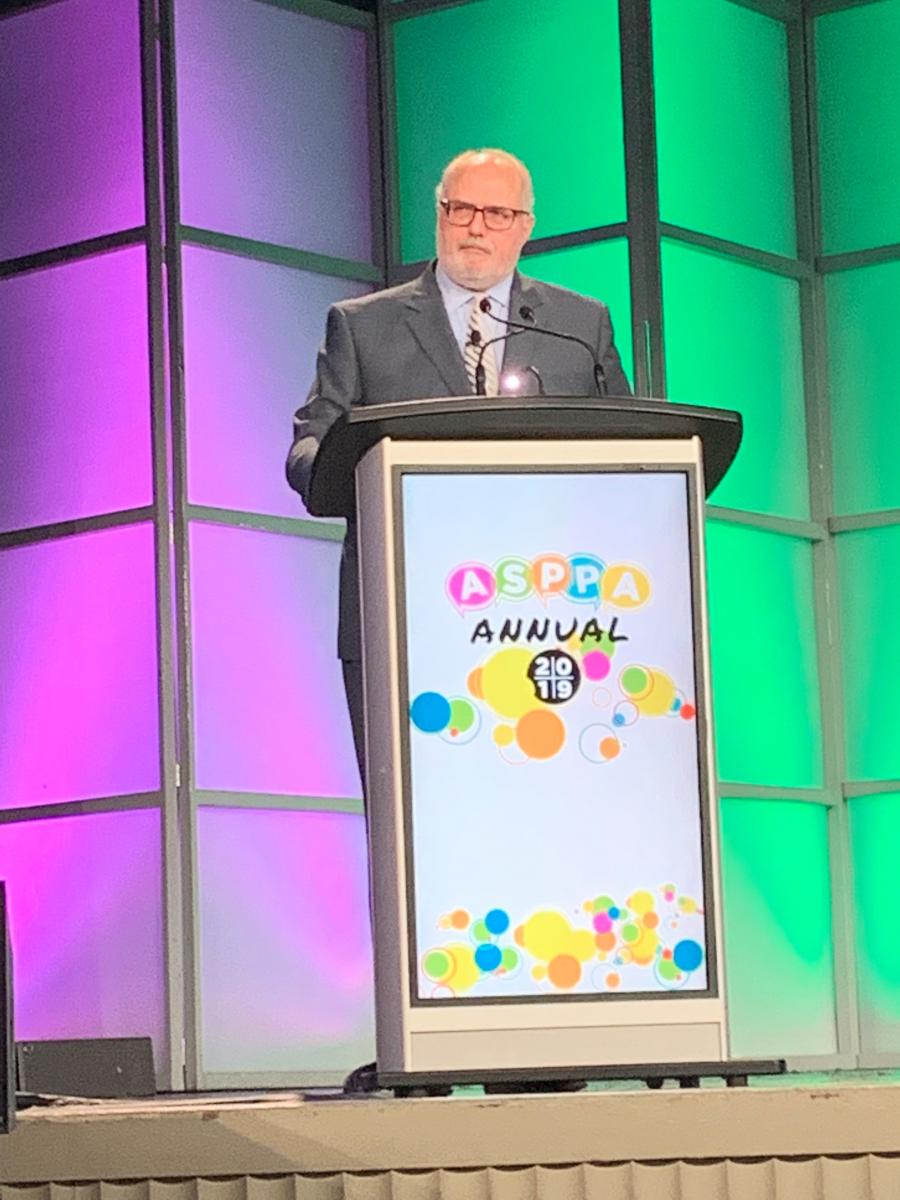In a move estimated to save plans and participants $2.4 billion over the next decade, the Labor Department has unveiled a new, optional, electronic delivery safe harbor for retirement plans.
 The Honorable Preston Rutledge, Assistant Secretary of Labor, announced the new proposed safe harbor at the 2019 ASPPA Annual Conference at National Harbor, Maryland as the rule was posted online.
The Honorable Preston Rutledge, Assistant Secretary of Labor, announced the new proposed safe harbor at the 2019 ASPPA Annual Conference at National Harbor, Maryland as the rule was posted online.
The proposal – which fulfills a key component of President Trump’s August 2018 retirement security Executive Order – would allow plan administrators who satisfy specified conditions to provide participants and beneficiaries with a notice that certain disclosures will be made available on a website.
“Electronic disclosure has been a priority issue in the retirement benefits world for a number of years,” said Rutledge. “This step forward – this rule – will provide significant benefits to plan participants, plan sponsors and plan administrators,” he told attendees.
Building on those comments, American Retirement Association CEO and ASPPA Executive Director Brian Graff told Rutledge that “as an organization that has been working with the departments to try and improve and make more sensible disclosure rules for retirement plan participants, we just want to thank you for your leadership” in the matter.
The Proposal
Rutledge explained that rather than sending volumes of paper documents through the mail, plan participants would be notified that information is available online, including instructions for how to access the disclosures and their right to receive paper copies of disclosures. The proposal also includes additional disclosure protections for retirement savers, such as standards for the website where disclosures will be posted and a requirement of system checks for invalid electronic addresses by administrators who choose to rely on the new, optional, safe harbor.
The DOL notes that the proposed safe harbor would be in addition to the 2002 safe harbor, thus allowing plan sponsors and administrators to choose between the two safe harbors or use both safe harbors, selecting the best approach for their plan population.
Noting that the 2002 safe harbor permits electronic disclosure to workers who affirmatively consent to electronic disclosure or who are using computers as an integral part of their job duties, Rutledge said that, “Stakeholders over the years have raised concern with the effectiveness of the 2002 safe harbor,” adding that they have said it's out of date and restrictive, especially the affirmative consent requirement.
“We’ve heard repeatedly from employers and plan service providers that they can use enhanced technology to improve workers’ disclosures. In addition, electronic disclosure can create efficiencies, cost reductions that do not exist when disclosures must be delivered by mail in paper. So, we recognize that a lot has changed since that safe harbor was issued in 2002,” said Rutledge, continuing, “Today, plan participants want and expect greater access to information electronically.”
In addition, individuals who prefer to receive these disclosures on paper would still be able to request paper copies and to opt out of electronic delivery entirely. Moreover, administrators may not default disclosures to electronic formats without first notifying – by paper – the ability to opt for paper disclosures.
As for the particulars of that electronic address, the proposal acknowledges that in the case of a company-provided email, or a company-issued mobile smartphone (with a data plan) and corresponding mobile phone number could also be used to satisfy this condition. Alternatively, the proposal also allows an employee to provide a different, personal email address to the administrator.
As noted above, the Department expects the proposal to expand use of internet technology to furnish covered disclosures to workers and to result in approximately $2.4 billion net cost savings over the next 10 years for ERISA-covered retirement plans by eliminating materials, printing and mailing costs associated with furnishing printed disclosures. Graff said that he thought that the DOL economists are correct that “we’re talking about billions of dollars that are going to be to the benefit of American workers’ retirement savings.”
Indeed, a report commissioned by the American Retirement Association and the Investment Company Institute in 2018 estimated that participants could save more than $500 million per year, assuming about eight participant mailings per year across more than 80 million 401(k) account holders.
Rutledge further noted that “the framework in the proposal is similar to the approach the Securities and Exchange Commission has taken for certain investor disclosures and is intended to align with the Internal Revenue Service rules about delivering retirement plan disclosures electronically.”
The DOL’s proposal also contains a Request for Information containing detailed questions about whether and how any additional changes to ERISA’s general disclosure framework are needed, with a focus on design, delivery and content to further improve the effectiveness of the disclosures.
And, consistent with President Trump’s Executive Order, Rutledge explained that the proposal solicits feedback not only on the safe harbor, but on additional ideas beyond that safe harbor to improve not just the delivery, but the effectiveness of the disclosures.
The proposed regulation and the accompanying RFI are scheduled to be published in the Federal Register on October 23, with comments due 30 days after publication in the Federal Register.

